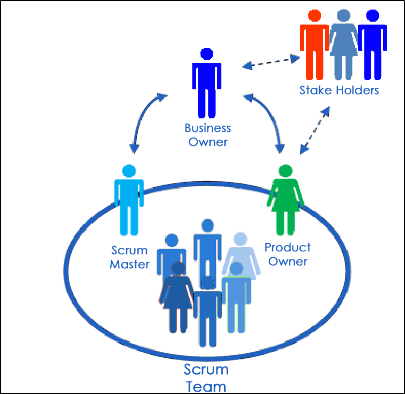In Agile, the testing life cycle starts from the requirements gathering phase. Unlike traditional testing methodologies, agile projects do not have a separate testing phase. Instead, a tester’s role begins with the developers’ job because an Agile project usually has shorter release windows than a traditional project (for example, a waterfall project). Therefore, the development and testing teams must work together parallelly to complete all tasks with quality quickly.

Agile has many advantages when compared to other testing methodologies. These include proven benefits such as better collaboration and communication between teams; savings in the form of time and cost; flexibility and adaptability to changes; and overall improvement to quality due to regular feedback from the end-user. Due to these proven benefits, many companies have moved to implement projects using Agile methods. However, while the benefits are apparent, testing in Agile does come with challenges. In this blog, we would like to highlight some of the obstacles testers may face and how to overcome them potentially.
Here are a few challenges and possible solutions:
Continuous Testing
Challenge: In Agile projects, continuous quality testing of software is necessary. As there would be frequent production releases, early and regular testing is needed. This form of implementation requires more collaboration, communication, and clarifications between the project teams. Therefore, it may be challenging to coordinate meetings, get the answers needed, and complete the activities within a specific sprint.
Solution: Agile teams can overcome this by having unambiguous user stories, early test cases and data creation, and task planning. User stories should be created with applicable acceptance criteria, and the story context should be well understood by all team members. In addition, it is vital to develop test cases along with test data as early as possible. In doing so, each feature designed can be tested as soon as it is made available. Additionally, teams should review and plan QA assignments on an ongoing basis to help mitigate the risk of any unexpected tasks that could delay completing the required testing.
Communication and Collaboration
Challenge: Effective communication is a fundamental requirement for any Agile project. However, in today’s world of distributed teams across various locations, communication usually happens over phone calls, video conferences, or chat. This mode of communication increases the chances of miscommunication, incorrect assumptions, or incomplete information between the teams.
Solution: We can minimize communication gaps within and outside teams by using prominent and secured tools for messaging and document sharing/collaboration apart from regular team meetings. There are many tools available in the market which serve the purpose of meeting larger groups across locations. So based on the need, tools should be selected that can help overcome any communication gaps and ensure the team works together on defined project goals without any deviation.
Retrospective meetings are one another where distributed teams can collaborate and discuss 1) What went well in the previous project? 2) What improvements can be made in the upcoming project? 3) What are the new steps to be implemented going forward?
Inadequate Test Coverage
Challenge: In Agile, due to frequent changes in requirements and continuous integration, there is a high probability that we miss some of the critical test cases for any given story. We need to emphasize continuous integration for quick delivery, regression testing of individual modules, everything to be accomplished in less time.
Solution: We can overcome this by linking test cases to user stories, implementing a test case review process, and conducting impact analysis for every significant change. All test cases should be linked to user stories, either manually or through a test management tool, to ensure adequate coverage of test cases for every user story. Another method to ensure test coverage is implementing a test case review process where different stakeholders or peer groups review test cases and provide feedback. After every change in the requirement, there should be an impact analysis performed. This analysis will help ensure that every feature or component that is impacted by the change is accounted for and affected test cases are updated for supreme implementation of the change.
Test Automation
Challenges: In any agile project, it is good to implement automation testing. It saves time considerably amount of time as Agile testing has to go for a number of regression cycles. which needs a -testing team with automation skills and expertise to deliver within a short duration. In addition, when the agile team is working from different locations, we need to emphasize continuous integration for quick delivery, regression testing of individual modules delivered by different teams needs to be accomplished in less time and all changes, and new requirements need to pass through QA.
In any agile project, we should consider implementing automation testing as it saves a considerable amount of time and helps reduce errors in testing in the long run. However, it comes with challenges. The initial setup of automation testing requires the configuration of specialized tools and frameworks that could be time-consuming and exceed the time allocated for completing testing. In addition, implementing the wrong automation tool or having team members that lack experience or expertise in automation could lead to more effort than manual testing alone.
In any agile project, we should consider implementing automation testing. Agile methods must go for a number of regression cycles hence automation saves a considerable amount of time. The initial setup of automation testing requires the configuration of specialized tools and frameworks that could be time-consuming and exceed the time allocated for completing testing. In addition, implementing the wrong automation tool or having team members that lack experience or expertise in automation could lead to more effort than manual testing alone.
Solution: The agile test team must be encouraged to learn and implement the right automation tool that best suits the project requirement. The team should also include expert automation testers to coordinate with the development team and create the test scripts during the development phase. With the right automation tools and testers in place, implemented features can be tested quickly and delivered with quality within timelines.
The agile test team must be encouraged to learn and implement the right automation tool that best suits the project requirement. The team should also include expert automation testers to coordinate with the development team and create the test scripts. Initial automation setup might be time consuming but helps to save time in regular regression test phases. With the right automation tools and testers in place, implemented features can be tested quickly and delivered with quality within timelines.
Summary
Many Software development methodologies are available in the current trend, but Agile methodology has taken its prominent role among all to accommodate changing requirements. Agile methodologies will not give the best results when communication among teams is difficult. It rules and practices communication among developers, testers, and customers. Developers must be ready for any change at any time and the main aim of every stakeholder is to deliver what is needed and when and nothing else. Agile processes should be made a part of regular software testing processes as the industry is moving towards improving customer experience.

